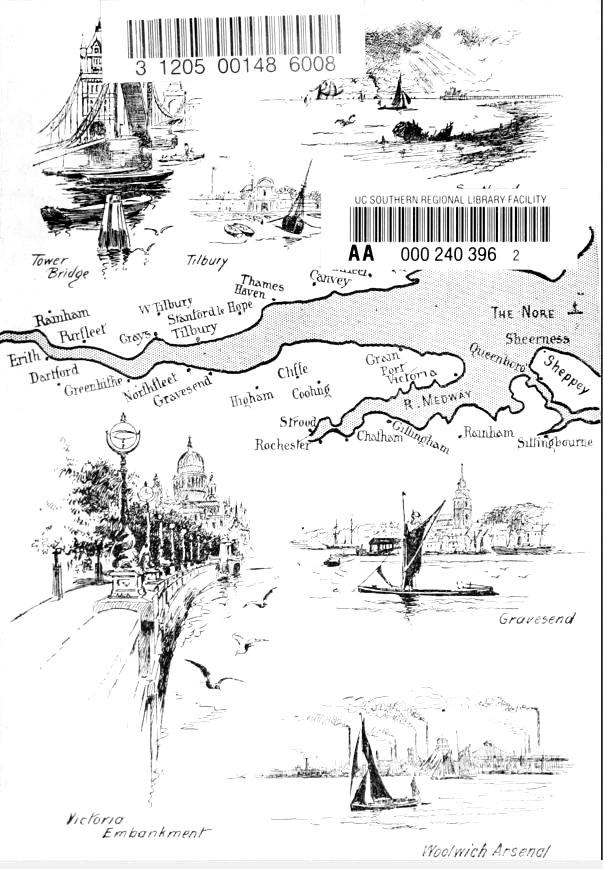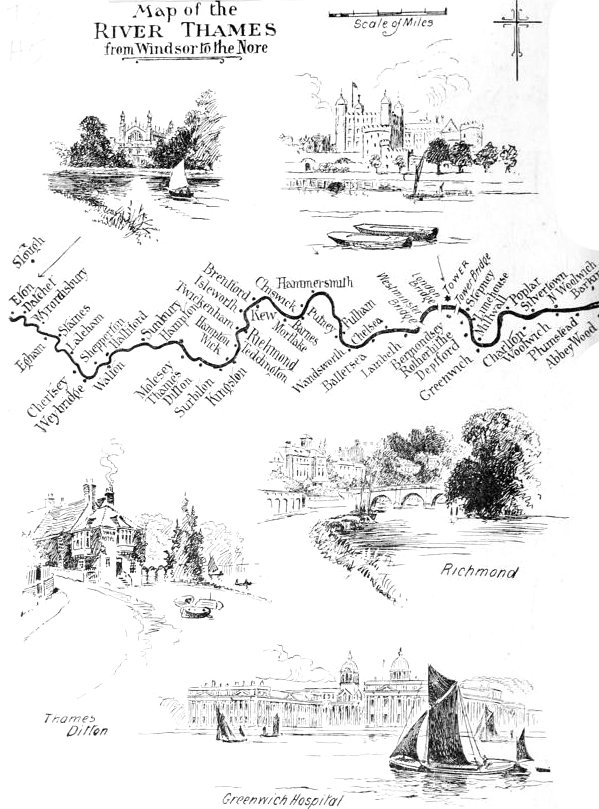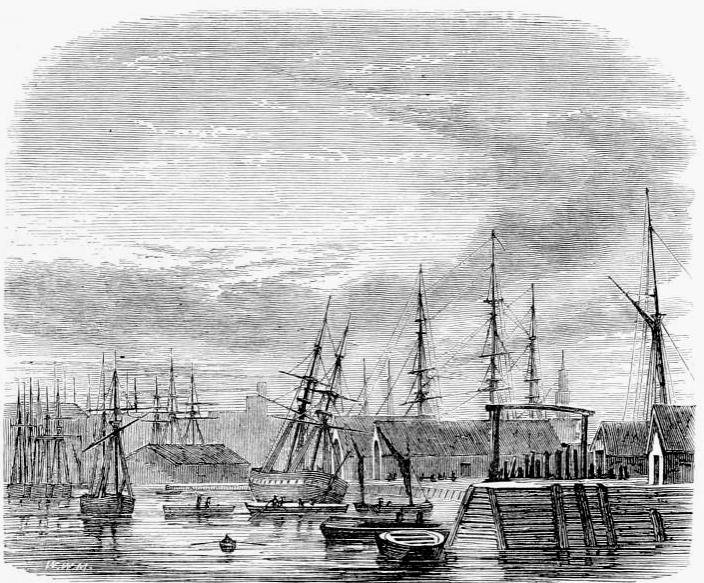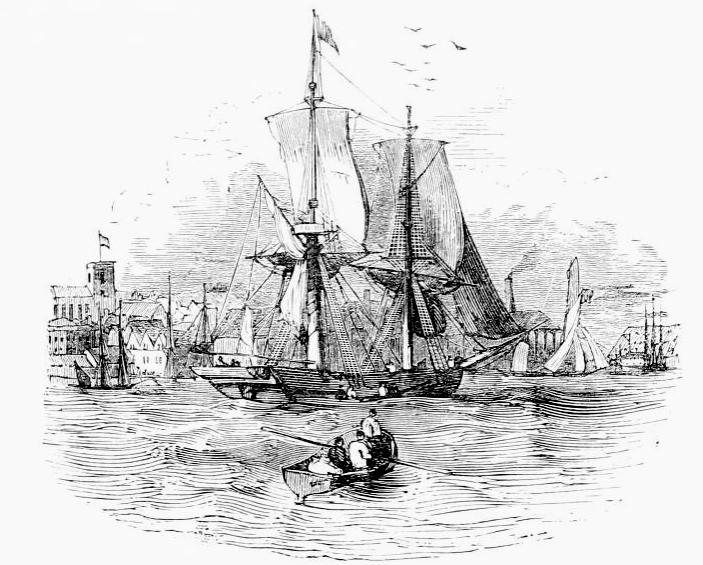The Thames is "the King of Island Rivers;" if deficient in the grander features of landscape, it is rich in pictorial beauty; its associations are closely linked with heroic men and glorious achievements; its antiquities are of the rarest and most instructive order; its natural productions of the highest interest; it wanders through fertile meads and beside pleasant banks, gathering strength from a thousand tributaries; on either side are remains of ancient grandeur, homely villages, retired cottages, palatial dwellings, and populous cities and towns; boats and barges, and the sea-craft of a hundred nations, indicate and enhance its wealth; numerous locks and bridges facilitate its navigation, and promote the traffic that gives it fame. Its history is that of England. . . . It would be indeed impossible to over-estimate the value of the Thames to the British capital. It is said that when one of our sovereigns, angry with the chief magistrate of the metropolis, threatened to ruin it by removing the court, he received the memorable answer, "But your Majesty cannot remove the Thames!" — Samuel Carter and A. M. Hall (1859)


The course of the River Thames from its source
- From its source to Windsor (I)
- From its source to Windsor (II)
- From Windsor to the Nore (I)
- From Windsor to the Nore (II)
- Detail (mouth of the Thames)
Bridges
- Old Battersea Bridge, Early Morning, painting by Walter Greaves
- Blackfriar’s Bridge, drawing by George Seymour
- Canon Street Bridge, drawing by P. Noel Boxer
- Canon Street Station and Bridge, drawing by George Seymour
- The Old Hungerford Bridge, etching by J. M. Whistler
- London Bridge in Modern Times, drawing by G. A. Symington
- Old London Bridge, drawing by G. A. Symington
- The Old Putney Bridge, etching by J. M. Whistler
- The Thames from Waterloo Bridge, etching by W. Walcot
- The Tower Bridge, drawing by Sir Frank Brangwyn
- London's Giant Gateway [Tower Bridge], drawing by G. A. Symington
- Waterloo Bridge, etching by D. Murray Smith
- Rough Weather. Watercolor by Emil Claus
- Waterloo Bridge — a Rainy Day . Watercolor by Emil Claus

Docks and dockyards
- Low Water, Dockhead Bermondsey, drawing by G. A. Symington
- Deptford Dockyard, engraving of a drawing by Walter W. May, R.N.
- Docks near Limehouse, drawing by P. Noel Boxer
- Freshwater Wharf, drawing by George Seymour
- The Gateway of the City, aquatint by C. H. Baskett
- Entrance to the West India Docks, engraving of a drawing by F. W. Fairholt, W. S. Coleman, or Walter W. May, R.N.
- Home from the Indies. A Giant Liner warping into the George Vth Dock, drawing by G. A. Symington
- Woolwich Dockyard, engraving of a drawing by Walter W. May, R.N.
- Work and Wealth on a Thames side Wharf, drawing by G. A. Symington

Major buildings

- Billingsgate, engraving of a drawing by F. W. Fairholt or W. S. Coleman
- Chelsea Hospital, engraving of a drawing by F. W. Fairholt or W. S. Coleman
- The Custom House, drawing by George Seymour
- Greenwich Hospital, engraving of a drawing by F. W. Fairholt or W. S. Coleman
- Greenwich Hospital, drawing by George Seymour
- Greenwich Hospital, drawing by G. A. Symington
- The Houses of Parliament from Charing Cross, etching by A.B. Kemplen
- Houses of Parliament, engraving of a drawing by F. W. Fairholt or W. S. Coleman
- Houses of Parliament, drawing by G. A. Symington
- Lambeth Palace, engraving of a drawing by F. W. Fairholt or W. S. Coleman
- The London County Hall, drawing by G. A. Symington
- Millbank Prison, engraving of a drawing by F. W. Fairholt or W. S. Coleman
- The Power Station, Chelsea, drawing by G. A. Symington
- Old Somerset House, engraving of a drawing by F. W. Fairholt or W. S. Coleman
- The Towers of Westminster, etching by Percy Robertson
- The Tower of London, etching by Percy Robertson
- The Tower of London, engraving of a drawing by F. W. Fairholt or W. S. Coleman
- Windsor Castle, drawing by G. A. Symington

River regions and landmarks
- Buckingham Water-gate, drawing by George Seymour
- Nocturne from Greaves Boat Yard, painting by Walter Greaves
- Nocturne: Battersea Reach, painting by Walter Greaves
- Moonlight, Battersea, painting by Walter Greaves
- Chelsea Reach, aquatint by Edward L. Laurenson
- Gravesend, drawing by G. A. Symington
- The Harbour Master's, Limehouse, drawing by M.C. Robinson
- Isle of Dogs, engraving of a drawing by Walter W. May, R.N.
- Limehouse, drawing by P. Noel Boxer
- The Lion Brewery, View from Charing Cross Bridge, etching by James McBey
- Millbank, watercolor by E. L. Lawrenson
- The Old Dreadnought, engraving of a drawing by Walter W. May, R.N.
- The Pool, drawing by G. A. Symington
- The Pool, drawing by George Seymour
- Queenhithe, engraving of a drawing by F. W. Fairholt or W. S. Coleman
- A Riverside Cement Works, drawing by G. A. Symington
- Rotherhithe, watercolor by Cecil King
- Rotherhithe Church; Tunnel Pier, engraving of a drawing by F. W. Fairholt or W. S. Coleman
- St. Paul’s from the River, drawing by George Seymour
- The Thames from the Monument, etching by Edgar Wilson
- Ships at Tower Stairs, engraving of a drawing by Walter W. May, R.N.
- Woolwich, engraving of a drawing by Walter W. May, R.N.
- Woolwich, drawing by G. A. Symington
- The Water-Gate of York House, drawing by G. A. Symington

Related Material
- The Thames above London
- The Bridges of London
- The Houses of Parliament
- Victorian ships and boats
- London's Changing Riverscape: Panoramas from London Bridge to Greenwich (a review)
References
Hall, Samuel Carter, and A. M. Hall. The Book of the Thames. London, Vertue, 1859.
London Past and Present. Ed. Malcolm C. Salaman. Text by Charles Holme. London: The Studio Ltd, 1916.
Last modified 17 October 2017